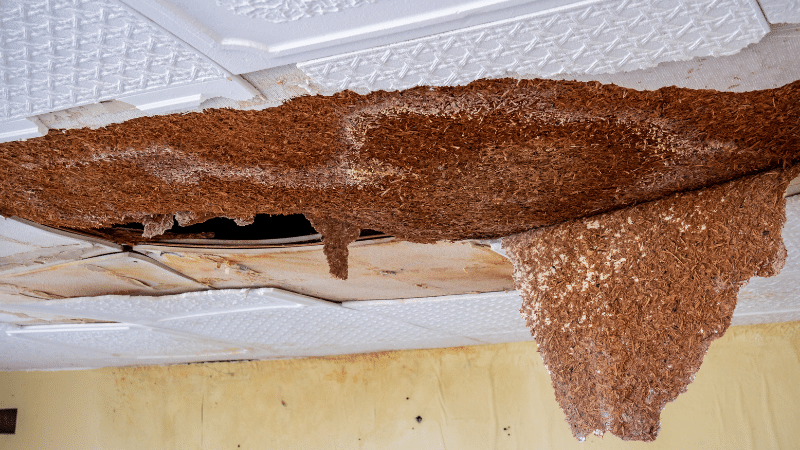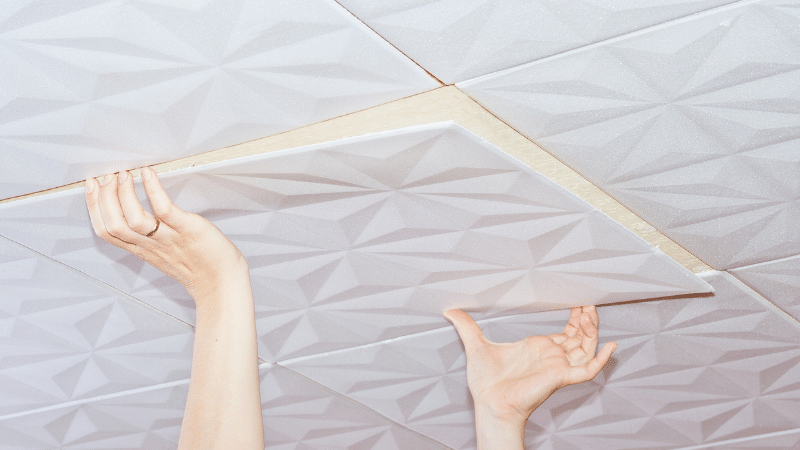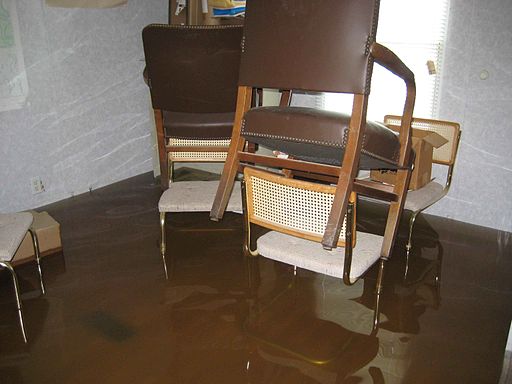How to Repair Water Damaged Ceiling Tiles
Ceiling tiles are used to cover the HVAC system and wiring that homeowners do not want in plain sight. However, when ceiling tiles get damaged or have water staining on them, they may have an unsightly presence and lose their structural integrity. To get this remediated, you will first need to figure out what is causing the water damage and how to repairRepair is the act of fixing or restoring damaged property, m... More the tiles. In some cases, you may not be able to repairRepair is the act of fixing or restoring damaged property, m... More them but may have to fully replace them. The most important thing is to react right away when you notice water stains on your ceiling tiles and not leave them sitting for a long period of time. This will help avoid further damage to your property.

Figure out the cause of water stains on your ceiling.
The first thing you need to do is determine what is causing the water damage so you can stop it at its source. Fixing the source of the water will limit the damage to the ceiling tiles and surrounding materials.
Here are some common reasons why your ceiling tiles may have water stains:
- Leaking HVAC components
- Plumbing leak, worn pipe insulationInsulation is a material used in buildings to reduce the tra... More, or pooling condensation
- Leaks from the roof or worn roofing
- Leaks from various appliances such as washers, water heaters, refrigerators, or dishwashers
- Worn caulking
Repairing Ceiling Tiles
After you have addressed the source of the water, you can turn your attention to the damaged ceiling tiles. The ceiling tiles can be restored if they only experienced surface damage. Ceiling tiles that have absorbed a significant amount of water will likely be permanently damaged and need to be replaced.
Permanently Damaged Tiles
If your tiles are severely damaged, you will need to fully replace them. This is because mold and other contaminants can spread further to the rest of the tiles. They can also harbor bad odors even if you fix the cosmetic imperfections.
Ceiling tiles will need to be replaced the specific way they were installed originally. Make sure to follow the correct process for the tiles you have in your home and get the right materials, tools, and specific tiles that you need for this project. This will help ensure that the tiles are placed properly, and nothing gets damaged in the process.

Tiles with Surface Damage
If there is surface damage to your tiles, you can try cleaning them with bleach or with paint. Below are the details for each cleaning method.
Bleach Process
Make sure you protect your floor with a drop cloth and remove dust and debris from the ceiling tiles. Prepare the ladder, safety glasses, and a spray bottle with a solutionA solution is a homogeneous mixture of two or more substance... More of half water and half bleach that you will be using to clean up your water-stained tiles. Spray the soiled area down with the solutionA solution is a homogeneous mixture of two or more substance... More and wait about half an hour until the damaged tiles are fully dry. Keep repeating the process until the stain has been fully removed.
For very small damage on your tiles, you can use a Q-tip dipped in bleach and rub the area to fully remove any stains. If you must remove the tiles, be very careful in doing so as they are fragile and can easily break. Also, you should ensure that you are not spraying too much solutionA solution is a homogeneous mixture of two or more substance... More on the tiles while cleaning them so they do not crack or sag.
Paint Process
Protect the floor with a drop cloth, apply a coat of stain-killing primer, and then repaint the affected area. Keep in mind that you can only use this type of primer, otherwise the stain will appear through the touched-up areas.
Reacting to Water Stained Ceiling Tiles
Make sure to never ignore a water-stained ceiling tile. If you do not act and repairRepair is the act of fixing or restoring damaged property, m... More water-stained ceiling tiles, you may end up with more damage including structural damage, mold, and bad indoor air qualityIndoor air quality (IAQ) refers to the condition of the air ... More. If you are concerned with finding the source of the leak in your home, make sure to consult a professional handyman to help you and give you an estimate for the repairRepair is the act of fixing or restoring damaged property, m... More.
If you are doubting if you need to replace the ceiling tiles in your home due to small or severe damage, keep in mind that they usually last about ten years. However, if they’ve been damaged, they may become brittle even sooner. If you keep your tiles for more than ten years, they may start warpingWarping is the bending, twisting, or distortion of materials... More and even breaking. To make your tiles last as long as possible, make sure to choose waterproof tiles as they will outlast regular ceiling tiles.
Finally, if you notice that your ceiling tiles have water damage or puncture holes, you will need to repairRepair is the act of fixing or restoring damaged property, m... More or replace them yourself in a short amount of time. However, if you ignore the water stains on your ceiling tiles, you may end up with even more damage that may be costly.

If you notice water damage to your ceiling tiles or anywhere else in your home, make sure to call a water damage restoration professional right away. These professionals will address the source of the water and restore the damage it caused, including damage to your ceiling tiles.












